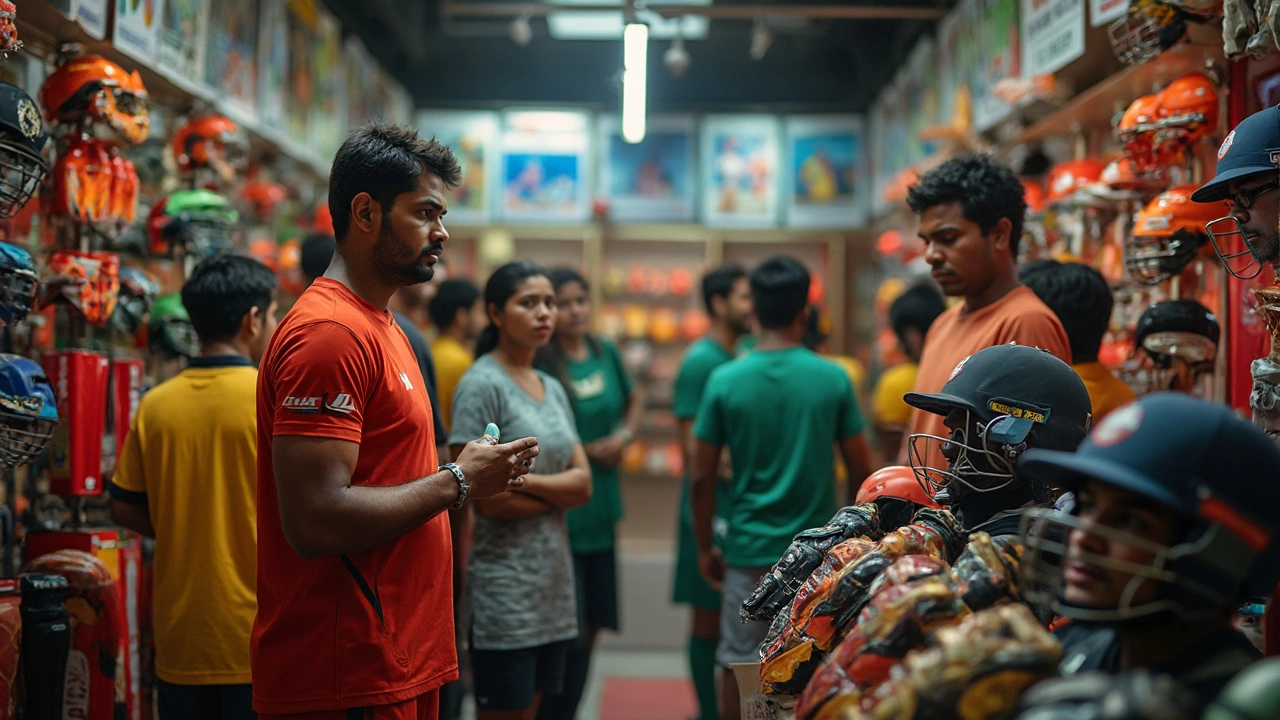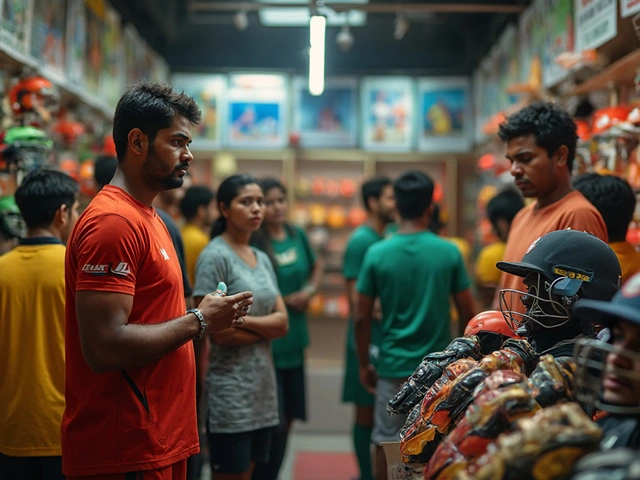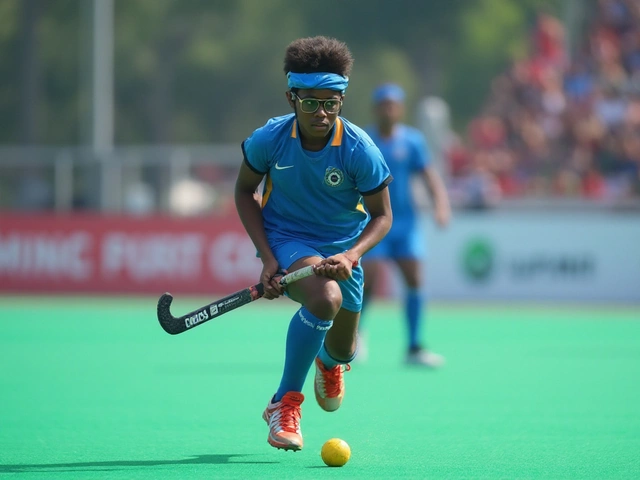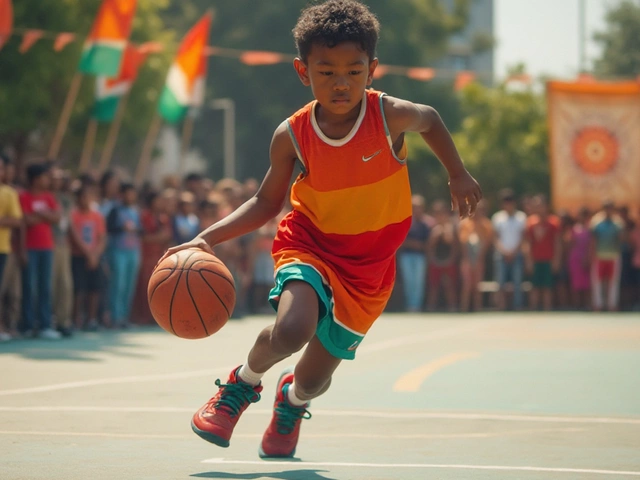Ever wondered why some sports look like a battle of armor, while others barely require a helmet? Protective equipment isn’t just for show—it’s what keeps athletes in one piece when the action gets rough. Whether you're suiting up for hockey or strapping on pads for football, the right gear can mean the difference between a close call and a trip to the ER.
There's no one-size-fits-all answer; different sports come with their own risks, so their protective gear is tailored to what could go wrong. Knowing what’s needed isn't just smart—it’s a basic part of playing safe and playing well. Plus, decent equipment prevents injuries that can sideline you for months or even end a season. Grab the right gear, and you won’t just look the part. You’ll feel a whole lot more confident the next time you step on the field, court, or rink.
- Why Protective Equipment Is Necessary
- Popular Sports and Their Gear
- Surprising Sports That Require Protection
- Common Injuries and How Gear Helps
- Tips for Picking and Caring for Your Equipment
Why Protective Equipment Is Necessary
Ever watched a rugby tackle or a hockey puck fly at crazy speed? There’s no doubt—sports can get rough. That’s exactly why protective gear is a must, not just an accessory. The numbers back it up: the CDC estimates almost 2.6 million kids show up at hospitals each year with sports injuries, most of which could have been less serious or avoided if proper equipment was used.
Different sports come with their own risks, and the gear is built to match those risks. Football helmets are about preventing concussions, while mouthguards save teeth in basketball and boxing. Hockey players suit up in layers of pads to handle both the collisions and flying pucks. Even less high-impact sports, like baseball, recommend batting helmets and faceguards because a fast pitch can do some real damage.
"The right protective equipment dramatically reduces your risk of serious or even fatal injuries. Without gear, common injuries become much more severe." — Dr. James Andrews, sports medicine specialist
Here’s a quick look at what the risks look like with and without proper equipment:
| Sport | Injury Risk Without Equipment | Common Protective Gear |
|---|---|---|
| Football | Concussions, broken bones | Helmet, shoulder pads |
| Baseball | Facial fractures, dental injuries | Helmet, mouthguard, faceguard |
| Cycling | Serious head injuries | Helmet, gloves |
| Soccer | Shin fractures, concussions | Shin guards, soft helmets |
The bottom line: sports equipment isn’t optional if you want to avoid time on the sidelines. Coaches, leagues, and even schools make certain gear mandatory for a reason. It doesn’t just keep you safe—it lets you focus on playing your best, knowing you’re covered if things get unpredictable.
Popular Sports and Their Gear
Most people know that football players need helmets, but there’s a lot more to it when you look closer at different sports equipment. Protective gear changes depending on where, how, and what kind of contact or risk is part of the sport.
Take a look at what athletes wear in some of the most popular sports:
- Football (American): No helmet, no game. Add shoulder pads, mouthguards, and padded pants to the list. The NFL made helmet technology a huge focus after concussion stats came out—over 270 diagnosed concussions in the 2023 season alone.
- Soccer: Shin guards are not optional! Goalkeepers also wear gloves and sometimes padded jerseys. FIFA rules require shin guards for every player on the pitch.
- Ice Hockey: Players strap on helmets, mouthguards, padded shorts, shin guards, elbow pads, and gloves. The NHL tracks every injury, and a lot of them are cuts from flying pucks or collisions—hence all that padding.
- Baseball: Batters and catchers need helmets; catchers also wear chest protectors, face masks, and shin guards. Little League rules are so strict on helmet requirements, you can’t even take batting practice without one.
- Cricket: Batters, wicket-keepers, and some fielders wear helmets, padded gloves, abdomen guards, and thigh and shin pads. The ball can reach more than 90 mph—protective gear isn’t just comfort, it’s survival.
- Basketball: Not as much gear, but mouthguards, knee pads, and ankle braces are common, especially at pro levels where injuries hit fast. NBA players like Stephen Curry rely on ankle braces after repeat sprains early in their careers.
| Sport | Essential Protective Gear | Common Reason for Use |
|---|---|---|
| Football | Helmet, shoulder pads, mouthguard, padded pants | Head injuries, bone fractures |
| Soccer | Shin guards, goalie gloves | Leg injuries, impact from ball or cleats |
| Ice Hockey | Helmet, pads, gloves, mouthguard | Falls, puck strikes, collisions |
| Baseball | Batting helmet, catcher’s gear | Ball impact, slides, foul tips |
| Cricket | Helmet, gloves, pads | High-speed ball contact |
The main reason protective equipment is so important? Injuries are way less likely when you’re suited up right. Most leagues won’t even let you play if you don’t have approved gear, and there are regular updates to rules and designs based on injury data.
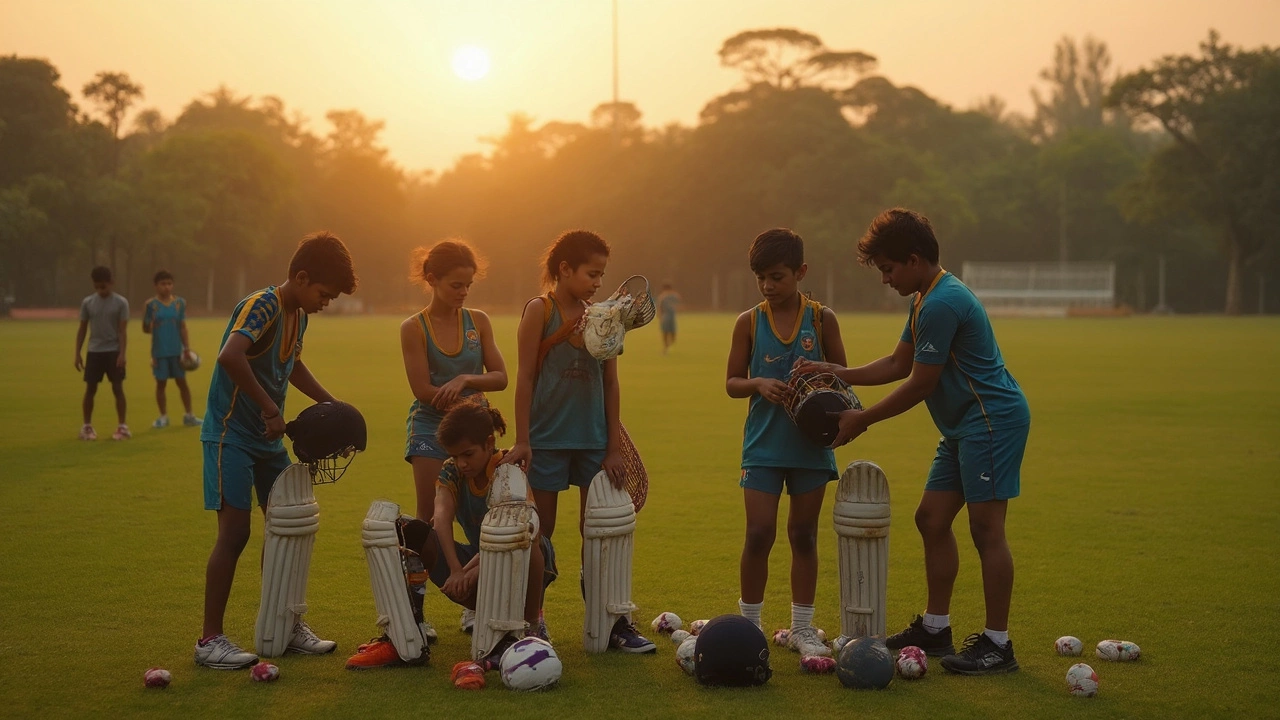
Surprising Sports That Require Protection
Plenty of folks expect gear in football or hockey, but some other sports need serious protection you might not guess just looking from the sidelines. Here's where things get interesting—you’ll spot shin guards and helmets in places you never thought of. Turns out, even "low-contact" sports pack hidden risks.
Take cricket, for example. Batsmen wear padded gloves, chest guards, and strong helmets to avoid being hit by balls flying at over 90 mph. Water polo? Yep, players rock ear guards to prevent burst eardrums from stray elbows and flying balls. Even fencing is loaded with gear—masks, heavy jackets, and thick gloves protect athletes from accidental pokes when a blade goes awry. Cycling races, not just the extreme mountain ones, always require helmets, with some events asking for body armor, especially in BMX competitions.
If you do cheerleading, don’t think you’re off the hook. A 2022 study from the National Center for Catastrophic Sport Injury Research showed that cheerleading accounted for about 65% of catastrophic sports injuries among female athletes in the U.S., and many squads now use padded mats and braces.
- Volleyball: Finger tape and knee pads keep joints safe from hard hits and digs.
- Baseball/Softball: Batters and catchers suit up with helmets, face cages, and chest protectors.
- Equestrian: Helmets and safety vests have become standard after high-profile accidents in show jumping and eventing.
Check out how some of these "unexpected" sports stack up in terms of injury and protective gear requirements:
| Sport | Essential Protective Gear | Common Injury |
|---|---|---|
| Cricket | Helmet, gloves, chest pad | Head trauma, broken fingers |
| Cheerleading | Padded mats, braces | Spinal injuries, sprains |
| Water Polo | Ear guards | Ear injuries, eye injuries |
| Cycling (BMX) | Helmet, body armor | Head injuries, fractures |
| Fencing | Mask, gloves, jacket | Lacerations, bruises |
So, if you’re eyeing a new sport, don’t just buy the ball or racquet. Look up the gear—even "safe" sports come with hidden dangers. It's way easier to gear up than to recover from injury.
Common Injuries and How Gear Helps
Every sport comes with its own risk of injuries. But let’s be real, some hits, falls, and clashes are just part of the game. The difference between a temporary bruise and a serious injury often comes down to the right protective gear.
Take football, for example. Concussions happen when the head takes a hard knock, which is why helmets have thick padding and a shell built to absorb impacts. Shoulder pads help with those bone-crunching tackles, spreading the force so you’re less likely to break a collarbone. In ice hockey, face shields and mouthguards keep teeth and jaws safe from flying pucks, while shin guards stop nasty bruises from sticks and skates.
Soccer players face rolled ankles and cracked shins. That’s why they never skip ankle braces or shin guards. Same goes for baseball catchers—mask, chest protector, and leg guards are a must when you’re dealing with wild pitches and flying bats. Then you have cycling: helmets protect from serious head injuries, which remains the leading cause of death in bike crashes.
Here’s a quick look at injury rates in popular sports and how often protective gear saves the day:
| Sport | Common Injuries | % Injuries Prevented by Gear |
|---|---|---|
| Football | Concussions, fractures, bruises | 60% |
| Ice Hockey | Facial cuts, dental injuries, concussions | 55% |
| Soccer | Shin bruising, ankle sprains, knee injuries | 45% |
| Cycling | Head injuries, scrapes, fractures | 85% (helmet-related) |
| Baseball | Facial fractures, hand injuries | 50% |
If you want your gear to work well, make sure it fits properly and isn’t worn out. Cracked helmets and loose pads don’t protect like they should—they can backfire. Pro tip: replace helmets after any major hit or visible damage, even if it still looks okay from the outside.

Tips for Picking and Caring for Your Equipment
Choosing the right sports equipment might sound straightforward, but it’s pretty easy to get it wrong—especially if you’re new to the game. Start by making sure the gear fits your body properly. Helmets should sit snug (but not tight), and pads shouldn’t slide around when you move. If you’re still growing, look for adjustable options, especially for younger players. Size guides from brands are actually worth checking out—don’t just guess based on age or height.
Comfort is a big deal. Try different models if possible, and don’t be shy about wearing gear for a few minutes in the shop or at home if the store lets you. If it rubs or pinches now, it’ll be much worse when you’re sweaty and active. Breathable materials and solid straps or closures make a big difference when you’re moving around.
Stick to reputable brands or certified products. In the US, for example, football helmets should meet NOCSAE standards, and cycling helmets need a CPSC sticker. Cheap knock-offs might save you money up front, but they often skimp on real protection or fall apart quickly.
If you’re buying used, inspect everything for cracks, loose stitching, or missing parts. Worn padding and busted straps won’t protect you like they should. For mouthguards, buy new. They mold to your teeth, and using someone else’s is just gross—and risky for hygiene.
Keeping your equipment in good shape is just as important. After each use, air out helmets, pads, and gloves. Sweat and dirt can make gear stink, but worse, they break down fabric and plastic. A simple wipe with a damp cloth and an occasional full clean (check the label for instructions) keeps everything lasting longer.
- Store gear in a cool, dry place. Throwing it in a locked car trunk all summer? Not a great plan—heat can warp plastic and ruin foam.
- Check for wear and tear before every game or practice. Catching a crack or split early prevents mid-game surprises.
- Replace gear after a big impact, especially helmets. Most reputable brands recommend switching them out after any major hit, even if they look okay from the outside.
Don’t forget to label your gear if you play on a team. Mix-ups happen all the time in locker rooms, and having your name on everything saves a lot of hassle.
Solid, well-cared-for equipment isn’t just about staying in the game—it’s about making sure you’re not taking risks you don’t need to. If something doesn’t feel right or stops fitting, swap it out before it becomes a problem.
